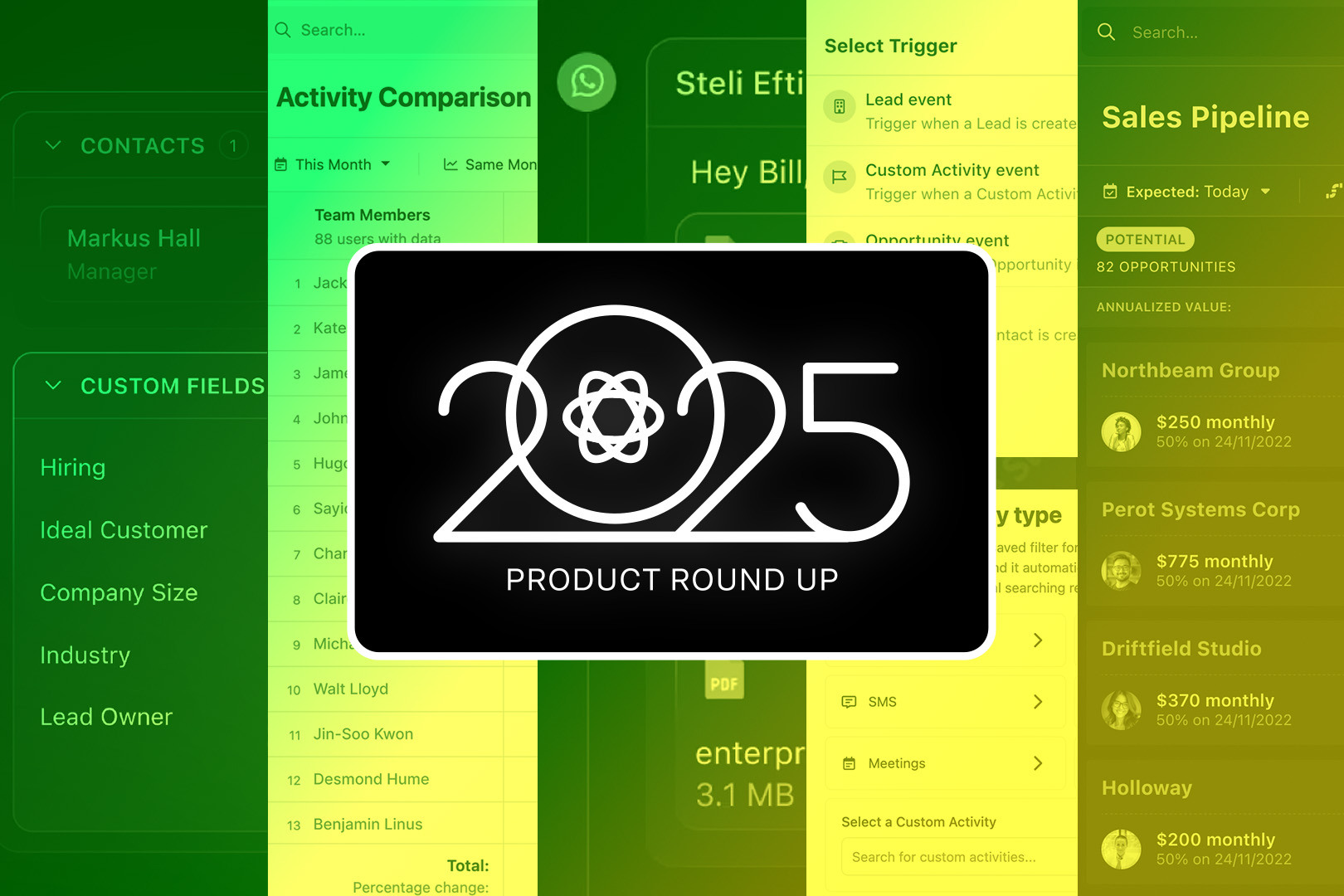A recent iOS release—featuring a new call screening feature in which on-device intelligence may automatically screen the call—has some salespeople worried they’ll never reach another cold call again.
But the new feature isn’t the end of cold calling. We call it the end of lazy cold-calling.
As sales leader Kyle Asay of LaunchDarkly said, “Apple’s new call screening is great news…for good cold callers. It’s only bad news if you view cold calling as a way to ‘trick’ someone into answering the phone and then ‘persuading’ them to accept a meeting.”
Yes, auto-call screening is a potentially earth-shifting feature in sales outreach. But you’re not just any salesperson, either.
Why This Change Matters for Sales Teams
If iPhones are now handling the call screening on the user’s behalf, the temptation is to think: game over. Any call that remotely smells of spam will be dumped with such automatic ease that the user won’t even notice it happens.
Color us skeptical.
What if this technology is just changing the best approach—not erasing the efficacy of an entire style of sales outreach?
We’re not the only ones who feel this way. Richard Smith, Head of Growth for MySalesCoach, likens the new feature to a person guarding the door to a fancy high-rise. Yes, there’s a new gatekeeper to contend with. But that simply means reps must “win the right to speak before the call is answered,” says Richard.
A “good” cold caller post iOS 26 is defined by intentionality, personalization, and clarity. With call screening now acting like a ‘doorman,’ the rep must now win the right to speak before the call is answered.
That’s not to say the industry is without its share of freakouts. As sales expert Will Aitken notes, “Many others are freaking out because it will undoubtedly lead to fewer cold calls being answered if you’re generic, or don’t understand the rules of the game. A good cold caller knows how to prepare ahead of time with research and list building so that you can open with confidence while triggering curiosity.”
While iOS is probably going to throw a wrench in a lazy outbound sales funnel, some simple adaptations can keep the art of the cold call alive. And that starts with the way you open a call.
The Death of the Generic Opener
We already live in the age of the “unknown caller.” Once, a ringing phone was always a mystery: to find out who was on the other end of the line, we had to pick it up. That hasn’t been true in some time. Smartphones have made us regard any new number with suspicion.
To your prospect, an unknown caller could be anyone—except for someone they know. A telemarketer. A car warranty call. A credit card company calling with an “exciting new offer.”
How does the iOS update change that?
It shifts the prospect’s moment of judgment to earlier in the interaction. While more call screening will be automatic, that doesn’t mean every call will be silently rejected before your prospect ever sees anything.
Even before this update, the option of silencing unknown callers was already available. If you sent someone to voicemail, the judgment moment happened when the prospect listened to that recording instead.
Now, the update can potentially move you to the screening transcript. That’s why it comes down to one key element: your reason for calling.
A generic opener won’t work anymore.
“You shouldn’t be word vomiting on your prospects,” notes Will. “Don’t spill your candy at the front door. Share enough in your ‘reason for calling’ so that the person knows that the call is for them specifically and would make them curious enough to pick up.”
Once the prospects do decide to pick up, Richard echoes the sentiment. He recommends getting right to the point so you can establish a relationship with the customer outside of unknown-caller territory.
“Openers like ‘Hi, how’s your day?’ or ‘Caught you at a bad time?’ are now obsolete when screening is on,” Richard says. “Instead, lead with clarity and intrigue during screening. Lead with a problem your prospect cares about in order to get them to accept the call. If they answer post-screening, use a transition like: ‘Thanks for accepting the call — sounds like something in my message caught your interest?’”
Crafting a Reason Worth Answering For
Are you worth picking up? If your sales pitch were a book, would the first page make people want to read more?
Will recommends thinking this way about your calls: use a mystery to spark some curiosity. If you can incorporate your prospect’s pain point into that mystery, all the more relevant. It might sound something like this:
Now it sounds like someone has done some research on the website, pointed out a problem, and has something to say that may spark an instant improvement. If the prospect is interested in improving their website, they suddenly have an incentive to pick up.
But creating mystery and intrigue alone is vague. Richard highlights some elements that every new message should incorporate:
- Developing custom call-screening scripts, separated by persona and industry. There’s nothing wrong with leaning on a basic template. But if that template is the same for everyone—different industries, different interests—then it’s quickly going to appeal to no one. It’s more engaging for your prospects if you create call-screening scripts designed for specific pain points.
- Training reps on concise messaging and transcription clarity. Clear and simple: those are two underrated words for this new iOS update. Everyone with an iPhone is scrolling through a million notifications in their daily life. If your message is too buried in intrigue and mystery, prospects might wonder if the juice is really worth the squeeze. Better to keep your pitch simple.
- Reinforcing multi-channel orchestration. Since call-screening updates don’t happen in vacuums, remember that it’s all a part of a larger shift toward integrated sales outreach. Think about it this way: if the only time a prospect ever hears from you is during a cold call, you’re going “all-in” on just one moment. Don’t. Instead, align your phone calls with targeted e-mails, LinkedIn engagement, and even in-person touchpoints if possible.
- Encouraging referral-led outreach and ICP refinement. Referrals have a way of short-circuiting our “do not call” skepticism. When a prospect hears you were recommended by someone they trust? Your call is no longer cold. Now it’s a recommendation. Likewise, refine your ICP (Ideal Customer Profile) to ensure that you spend the most time with the people most likely to pick up in the first place.
What does this look like in practice? According to Richard, you might build a script template that resembles this:
Voila. You don’t have to incorporate that word-for-word, but you should build a compelling screening message that hits three key points:
- Saying what you saw: pointing out the specific trigger for your phone call makes it sound more “warm.”
- Leaving with an unanswered question: can you spark curiosity without overexplaining?
- Tying your call to a real pain point: make your call about the challenge you know they’re already going through.
Testing and Optimization in the Screening Era
Smart salespeople test their systems. But in this new high-screening era, testing may seem somewhat…obsolete. At first glance, testing your approach means dealing with smaller windows and sample sizes. If you’re more likely to get screened, you have fewer chances to experiment.
But that’s exactly why controlled testing matters. Will recommends keeping your experiments, but making them simpler and isolated.
“I’d try 500 dials using one [script],” says Will. “And then 500 dials using another. See if there is a meaningful change in pickup rate. Keep it consistent and try not to change anything between calls to really have confidence in what’s working.”
To Richard, this begins with segmenting your personas. If you already know a little more about the prospects you’re cold calling, you’re more likely to run a successful test in the first place.
“Segment personas,” Richard says, “and test variations in language, tone, content… Track call accept rate, post-accept conversation duration, call-to-meeting conversions.”
Richard’s pro-tip: tagging specific entries in your CRM with “screening on/off” so you can tailor scripts as appropriate.
Relationship-First Outreach Will Win
Yes, we are somewhat talking around the inevitable: these days, most people won’t answer calls from unknown numbers. In fact, we might even be suspicious of phone calls from people we know. (What? You couldn’t send a text?)
That’s why every interaction before the call will matter more than ever. If no one is calling each other anymore unless they’re a trusted contact, you’re going to have to focus on that relationship. It’s not that cold-calling is dead, but you may have to do some more work to warm it up a tad.
The way to do this is to maximize your personalization at every touchpoint. As Richard notes, “Every social or digital touchpoint—from a like on LinkedIn to an email read—now warms up the prospect so your name is recognized at the moment of screening. The call becomes less cold, more contextual.”
Will agrees. “Use all outreach channels (email, LinkedIn, face to face) to build familiarity. While also working to strengthen your company and personal brand.”
Try to get your prospect not to see you as a random number calling at a random time. If you can be a familiar face—or at least address a familiar problem—you’ll stand a much better chance at landing the call, and therefore landing the sale.
Here are a few practical tactics you can use as takeaways:
- Engage with prospects on LinkedIn a few weeks before calling. If you’ve had some friendly banter and a little back-and-forth, potential customers will be more receptive to the warm pitch. They know you’ve taken the time to interact with them. That trust pays dividends at the moment of truth.
- Warm up emails with value, not “just bumping.” We know it’s tough to get your emails noticed. But if you simply “bump” your email thread to the top of a prospect’s inbox, it doesn’t always feel like an organic digital touchpoint. Try to add value to their life whenever you can.
- Use referrals whenever possible. You may not always have an intermediary recommending you to potential customers, but if you can find some, use them. It’s an instant solution to the cold-calling problem.
Moving From Call Volume to Prioritizing Value
The call screening update did make one thing clear. High-volume, spray-and-pray approaches are no longer the way to go. They’re not just inefficient anymore; they might be downright unproductive.
If prospects are answering fewer calls, you can’t measure your success by call volume and play the percentages. You’ll be better off measuring the number of calls accepted from truly qualified prospects.
“Shift focus from total dials,” says Richard, “to accepted, qualified conversations… Lower volume might be expected, but higher intent and stronger outcomes justify the shift.”
Ditto for Will. “Don’t call everybody for the sake of it. Save your energy, time, and hard work for the best-fit prospects. That means narrowing your lists and research. Taking your filters a layer deeper than company and title attributes (recent news, changes, triggers, tech stacks, etc.).”
Don’t call every VP of Sales in your CRM, for example. Maybe you narrow your outreach to VPs with a unique variable—those who have recently changed roles or adopted a new tech stack. This shift aligns with the enhanced visibility of having a reason for calling within iOS. If your outreach remains relevant to this person at this time, your chances of making it past the screen will skyrocket.
Get Moving: The Competitive Advantage for Early Adopters
The game didn’t change—the bar just got raised.
Apple’s screening feature is like a lie detector test for sales clarity. You’ve always needed a reason to call. Now you need a damn good one before they even pick up.
And look—this is great news for great reps. The ones who actually do the work — the prep, the research, the personalized hooks, the curiosity-led messaging. It’s terrible news for the reps dialing 200 people a day with “Hey, is this a bad time?” and hoping for a miracle.
Cold calling isn’t dead. But if your pitch doesn’t make it past a lock screen, maybe it should be.
Want to make cold calling work for you with enhanced features that support more in-depth, trustworthy calling relationships with your prospects? Give Close CRM a try with a risk-free trial.












